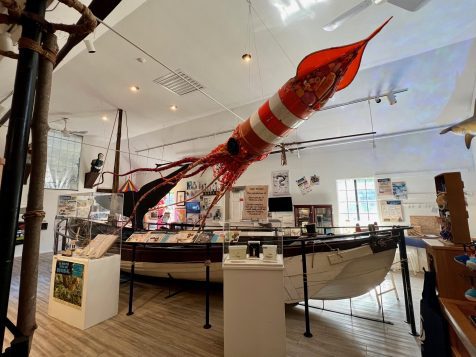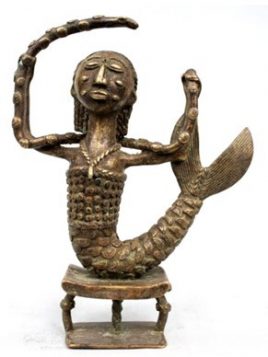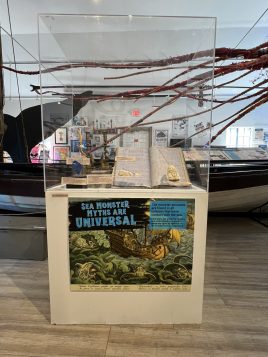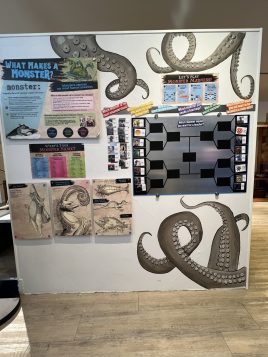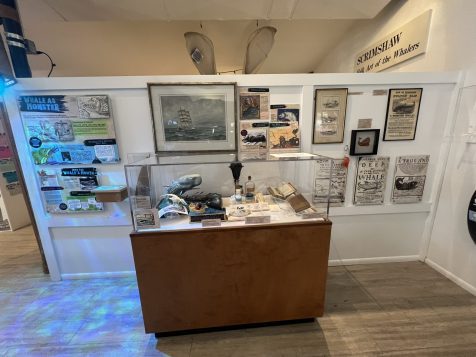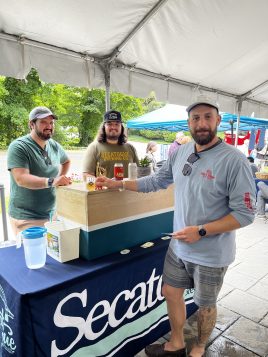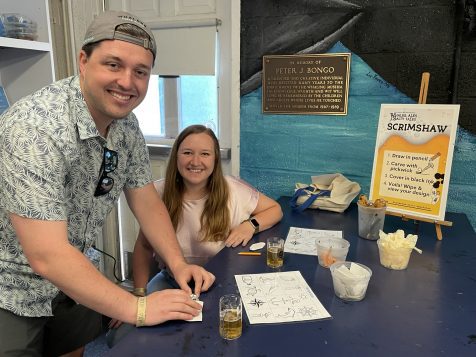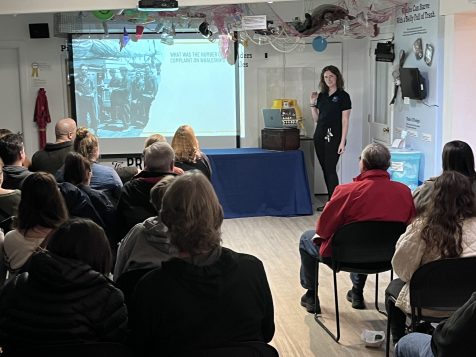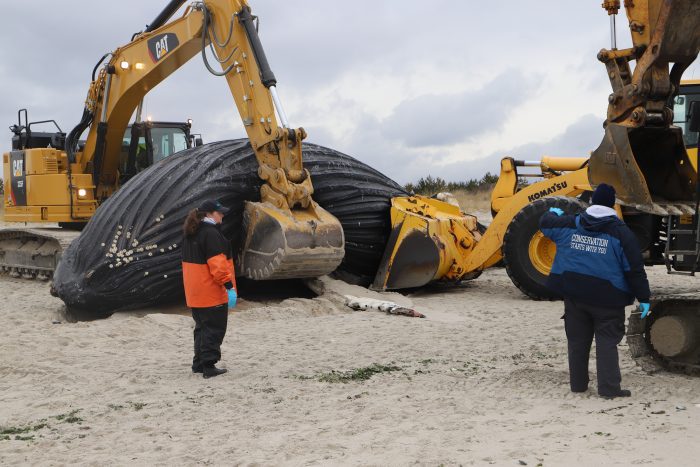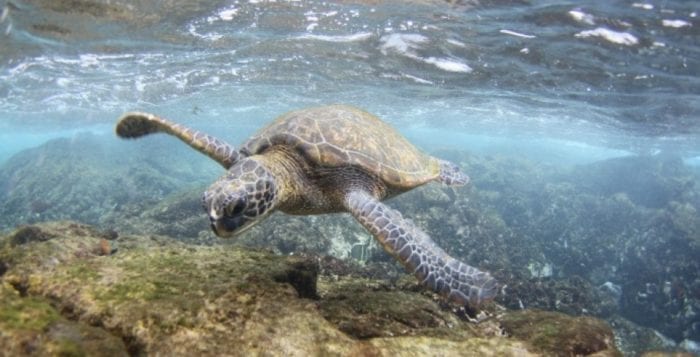The Whaling Museum & Education Center, 301 Main St., Cold Spring Harbor has announced the opening of a new special exhibition, Monsters and Mermaids: Legends of the Sea.
The two-year exhibit developed by museum staff will explore ocean-inspired myths, legends, and their contemporary connections. By exploring nautical mythologies, visitors will be prompted to think about the ocean’s influence on how cultures were shaped and continue to shape us, and our impacts on the ocean today. The project will be the first exhibition about folklore on Long Island in 13 years and will shed light on monstrous beings of the deep just in time for the Halloween season.
Nomi Dayan, Executive Director of The Whaling Museum & Education Center, shares, “I think a fascinating element of this project is considering how people have perceived whales through time. Today, people light up when they talk about whales. We view them as breathtaking and highly complex creatures, and whale sightings can bring strong emotions and joy. But for millennia, they were seen quite differently by diverse cultures — in fact, the scientific name for the order of whales, ‘cetacean,’ translates to ‘sea monster.’ As part of this exhibition, visitors will stop and reflect on what the word ‘monster’ means to them.”
A highlight of the exhibition is a commissioned full-size kraken/squid sculpture created out of marine debris by multimedia artist Cindy Pease Roe. Based in Greenport, Roe is the founder of UpSculpt, an organization which combines public arts, conservation, and education. The artist has been featured in numerous exhibitions worldwide, and her work draws inspiration from her lifelong connection with the sea.
“The real sea monsters today are man-made, like marine plastics. By engaging the community to help collect materials for the Kraken, together, we’re reclaiming ownership and responsibility for our oceans, reshaping the narrative from fear to collective action and stewardship,” said Pease Roe.
Her new sculpture, created out of plastic marine debris collected on Long Island beaches, will bring attention to one of the largest sea monsters ever imagined — the legendary kraken, inspired by the Giant Squid.
The squid/kraken will be displayed in an original and imaginative context by being suspended above the museum’s historic whaleboat, thrusting contemporary plastic materials into a 19th century story. As the gallery’s defining focal point, Roe’s piece will be thematically central to Monsters & Mermaids, and flip the narrative by questioning who is really afraid of whom today? The sculpture will convey a powerful message about the fragility of legendary creatures and confront the massive human refuse which is changing the ocean’s stories today.
The community is encouraged to participate in this exhibit by donating red and orange plastics gathered from Long Island beaches. Donations can be made at the museum or by visiting UpSculpt.com for additional donation options.
In addition to the squid sculpture, visitors will see maps, prints, scrimshaw, ephemera, and specimens exploring the artistic and cultural folklore of sea serpents, whales, sirens, and other global legends. Artifacts will be sourced from the museum’s collection as well as loans from other institutions.
One of the items on display from the museum’s collection will be a 1986 diorama by artist Vincent P. Ciro titled “Ye Dam’n Whale.” It depicts a scene from Moby Dick by Herman Melville. “When we think about the Monster Whale, Herman Melville’s Moby Dick is perhaps the most ubiquitous example in American literature.” said Baylee Browning, Collections and Exhibits Associate, The Whaling Museum & Education Center, “But who is the monster, really? Is it Moby Dick, the White Whale, or Captain Ahab, the relentless pursuer? Monsters and Mermaids, Legends of the Sea will explore these questions about monstrosity and wonder. What is a monster, and what does that say about our understanding of the natural world, and of ourselves? We can’t wait to explore these questions with you this October and “sea” if you can decide.”
In addition, visitors will reflect on the endurance of mermaid myths throughout history, from cave paintings to the 2023 mermaid-core fashion trend and ubiquitous Starbucks logo. A closer look into the history of mermaid portrayals will also offer insights into the history of racist perspectives.
Long Islanders can look forward to the museum’s upcoming series of workshops, events, talks, and programming for both adults and children exploring themes in the exhibition.
To celebrate, the museum will host two opening events: “Monsters & Mermaids: Family Bash” on Sunday, October 6th, and an exclusive evening event, “Monsters and Mermaids: After Dark,” on Thursday, October 10th.
 The Family Bash, taking place from 11 a.m. to 3 p.m. on October 6, will transform the museum’s galleries into magical underwater realms. Families can enjoy a day filled with meeting a mermaid in a fantastical setting, exploring “Davy Jones’ Locker” with a touch tank featuring live sea creatures, and face painting that brings the event’s enchantment to life.
The Family Bash, taking place from 11 a.m. to 3 p.m. on October 6, will transform the museum’s galleries into magical underwater realms. Families can enjoy a day filled with meeting a mermaid in a fantastical setting, exploring “Davy Jones’ Locker” with a touch tank featuring live sea creatures, and face painting that brings the event’s enchantment to life.
Museum educators will offer interactive talks on the origins of the kraken and other deep-sea myths. Craft stations throughout the galleries will feature activities like making your own “monster slime” and other monster and mermaid-themed crafts. Guests are encouraged to wear their Halloween costumes to add to the festive atmosphere.
“We’re delighted to bring the magical world of oceanic legends to life,” said Brenna McCormick-Thompson, Curator of Education. “The Family Bash offers a wonderful opportunity for visitors to explore the new exhibit with special activities designed for kids and families.”
Admission to the “Monsters & Mermaids: Family Bash” includes all activities. Advance tickets are $20 for children and $8 for adults, with member rates of $15 for children and $5 for adults. Tickets at the door are $25 for children and $8 for adults, with member rates of $20 for children and $5 for adults. The museum extends its gratitude to Gellerman Orthodontics for sponsoring the Mermaid Performer.
“Monsters and Mermaids: After Dark,” set for October 10th from 7 to 9 p.m. is an exclusive adult-only event. This evening will feature activities tailored for a mature audience, alongside the same enchanting backdrop as the “Family Bash”. Attendees can savor sea-inspired cocktails or mocktails and participate in a craft workshop to create fancy creature specimen jars, perfect for Halloween décor.
For those seeking mystical insights, tarot card readings will be featured. A costume contest will add to the fun, with prizes for the most imaginative costumes.
“This special evening event provides a unique way to dive deeper into the exhibit,” added Thompson. “We look forward to creating a memorable and immersive experience where guests can fully explore the legendary history of ocean myths.”
Advance tickets for “Monsters and Mermaids: After Dark” are $40, with member tickets at $30. At the door, tickets are $45, with member tickets available for $35. For more details and to purchase tickets, visit cshwhalingmuseum.org/monsters.
The “Monsters & Mermaids: Legends of the Sea” exhibition and associated programs are supported in part with funds from the New York State National Maritime Heritage Education Subgrant Program. The exhibition is also supported in part by the New York State Council on the Arts (NYSCA), and Humanities New York, and Public Funding Provided by Suffolk County.
For the next two years, viewing the special exhibit will be included with regular admission to the museum. Admission to the museum is $8 for adults, $6 for seniors and children aged 4-17, and free for children aged 0-3 as well as Active Duty with ID. Gallery hours at the start of the exhibit will reflect fall and winter hours of Thursdays to Sundays from 11 a.m. to 4 p.m. For more information, visit www.cshwhalingmuseum.org.

